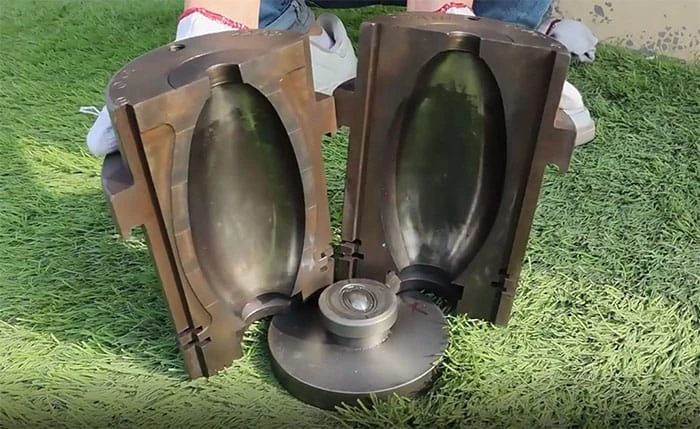During the molding process of long neck glass bottles, the manufacturing process is very demanding due to the cooling that causes the mold wall to dissipate a lot of heat. The cooling method is as follows.
- Natural cooling in the atmosphere: Due to the limited heat transfer capacity of the metal mold itself, natural cooling is only suitable for low forming speeds. Generally, this method is mostly used for manual work, especially when manually blowing hollow glass.
- Periodically immerse the mold in water for artificial cooling: When the wooden mold or graphite mold is cooled in this way, the water vapor layer formed between the mold and the glass acts as an isolation and lubrication layer. This method is suitable for manual blowing and automatic forming of thin-walled seamless glass.
- Cool the mold with one or several streams of compressed air (direct blowing or oblique blowing of the mold wall): This method is most widely used in the molding of long neck glass bottles.
According to the different cooling parts, continuous cooling of the outer wall or periodic direct cooling of the inner wall of the mold in contact with the glass can be used, or both methods can be used at the same time.
In addition to air, other cooling methods have also been proposed, such as evaporative cooling and circulating cooling with sodium as the coolant, as well as water cooling.
The inlet temperature, flow rate and water quality requirements of the cooling water vary according to the production rate of the product, the material of the mold, the shape and the thickness of each part. Take the picture tube glass bulb mold as an example: the cooling of the glass screen punch Water flow 20L/min water pressure 0.3MP.
